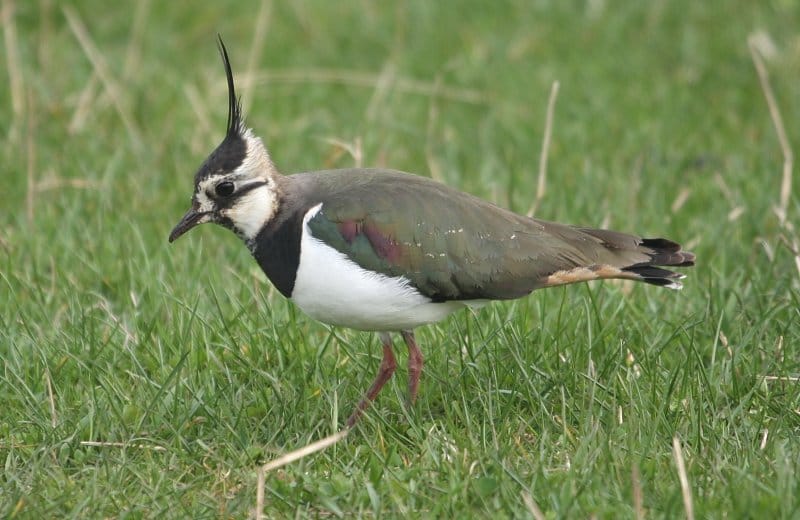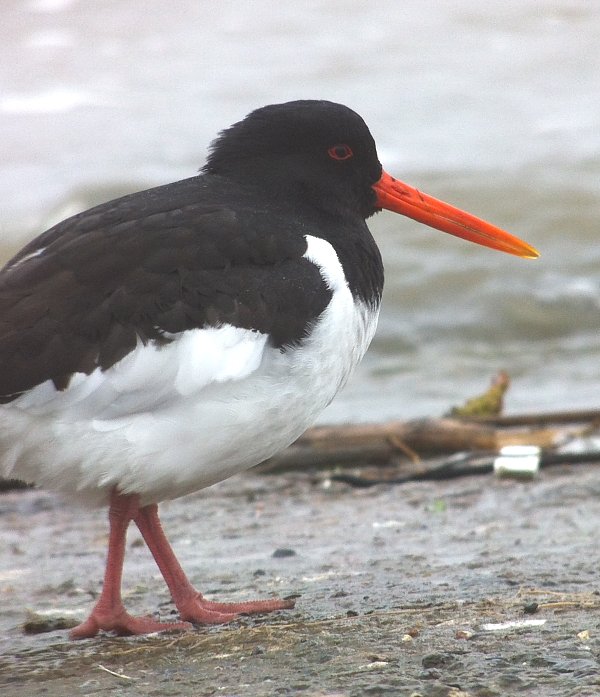
Ever been to a party where a couple get onto the dance floor and start throwing some moves before the food is served? Dressed up to the nines they just can’t resist the urge to get out there and put on a display for the rest of the party-goers who are often still in the early stages of waking up or acquiring the necessary dutch courage to get out and give it some.
Inland -breeding waders are without doubt the local equivalent of early party dancers. Whilst the southern coast of Britain and Ireland have been on the receiving end of the first ‘proper’ spring migrants with several Sand Martins and Wheatears this weekend just a few hundred miles further north it’s waders like the Eurasian Oystercatcher and Northern Lapwing that are showing up in numbers ready for the short move back to their inland/upland dance floors cum breeding grounds.
Already my local lake is playing host to a party of 60 Oystercatchers, instantly recognizable in their distinctive black and white plumage with the bright orange bill stuck on like a snowman’s carrot. Their loud piping calls rising and falling in apparent group frenzy as they wait head down for some invisible signal to move on to their final breeding site. Whilst many use traditional gravel sites close to river beds, more and more are taking to man-made sites such as golf courses and even flat factory roofs. The latter offering superb protection from ground predators and providing many factory workers with a connection with nature all too rare for most.
Eurasian Oystercatcher (Iphonescoped with Meopta S2 and Meopix)
Whilst many of the Lapwings currently loitering in local fields will move up country to breeding grounds a couple of pairs have taken to occasionally displaying over the crown of a bare ‘spring-sown’ field. At least one pair bred in this field last year as my son and I had to stop traffic and rescue the chicks as they were pinned down by traffic whilst trying to cross a busy road to a nearby wetland.
Despite massive declines in breeding numbers Lapwings are still one of our most familiar waders, they’re ‘pee-wit’ calls and looping diving display a quintessential part of the British landscape. Whilst black and white from a distance up close the superb metallic sheen of the dark green mantle and wings throw off hints of color like a disco mirror ball.
All too soon like most I’ll turn my attention to visitors from further afield but for now I’m just going to enjoy the sights and sounds of the early movers as they dance the dance.














Interesting post! I can’t imagine oystercatchers nesting on a factory rooftop. I appreciated your noting the good news there- that the factory workers got a glimpse of a beautiful bird!
That iPhone photo is very impressive, Alan. Lapwings and Oystercatchers , what great birds to see in your local fields and lakes.
This past Sunday ,with warming weatther, I observed a group of Northern Lapwing feeding in a field outside of Colmberg, which is located in northern Bavaria, Germany.
@Wendy – we also have winter roosts on large factory/shed roofs adjacent to at least one local harbour, presumably again safety from ground predators being the driver.
@Donna – Pleasantly surprised by the Meopta S2 scope and Meopix set-up and looking forward to using it some more.
@TLMarko – I guess this will be happening all over Europe as we speak.